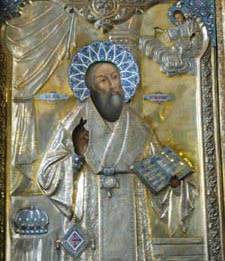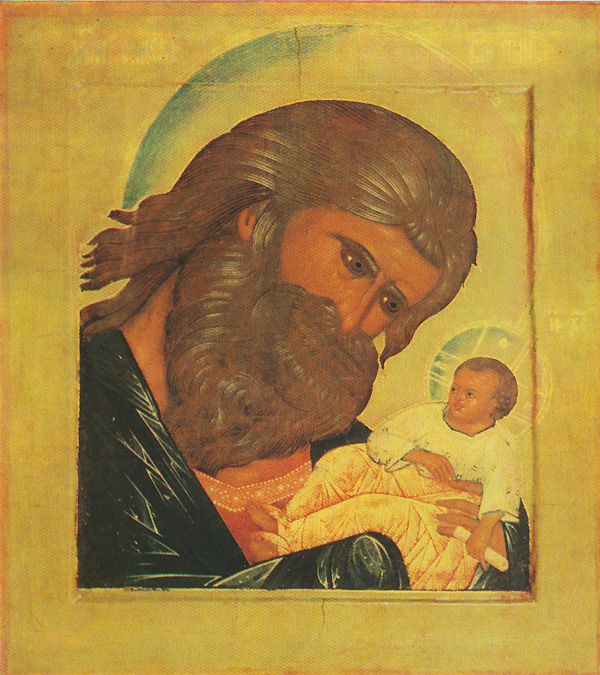Life & Faith
Questions and Answers about the Great Lent
 Great Lent and Pascha are the brightest and most instructive times in the Orthodox Calendar. That season begins with Forgiveness Sunday (March 10), when we mutually ask and receive forgiveness of one another. It is a season filled with prayer, services, spiritual and physical struggles, a time that culminates in the celebration of Pascha, Christ’s Resurrection (which this year falls on April 28).
Great Lent and Pascha are the brightest and most instructive times in the Orthodox Calendar. That season begins with Forgiveness Sunday (March 10), when we mutually ask and receive forgiveness of one another. It is a season filled with prayer, services, spiritual and physical struggles, a time that culminates in the celebration of Pascha, Christ’s Resurrection (which this year falls on April 28).
Holy Martyr Theodor of Komogovo
Teodor Sladić (Теодор Сладић) was born in a village in Kukuruzari (today Croatia) into a humble Serb family named Sladić. As a young man he accompanied a monk from the Serbian Orthodox Komogovina monastery (which is near his birthplace in Kukuruzari) to Moštanica monastery near Kozarska Dubica. He undertook an austere life both at Komogovina and Moštanica. When the Ottomans burned Moštanica, they killed many monks, as well as a large number of local Serbs from the surrounding villages.
The Holy Martyr George of Kratovo
By origin, George was a Serb from the town of Kratovo. He was a silversmith by trade and, in his heart and soul, was a convinced and a devout Christian. George was eighteen years old when the Turks tried to convert him to Islam. George remained as firm as a diamond in his faith. The Turks tortured him with many cruel tortures and finally burned him at the stake. He suffered for the beautiful Faith of Christ on February 11, 1515 A.D. in Sofia, Bulgaria, during the reign of Sultan Selim and was glorified with unfading glory in the heavens.
Saint Sava the Second of Serbia
 Saint Sava II (Serbian: Свети Сава II / Sveti Sava II; 1201–1271) was the third Archbishop of the Serbian Orthodox Church, serving from 1263 until his death in 1271. He was the middle son of King Stefan the First-Crowned of the Nemanjić dynasty and his Byzantine wife Eudokia Angelina. He had two brothers, Stefan Radoslav and Stefan Vladislav, and a sister, Komnena. Predislav took the monastic name of Sava, after his uncle, Saint Sava, the first Serbian Archbishop.
Saint Sava II (Serbian: Свети Сава II / Sveti Sava II; 1201–1271) was the third Archbishop of the Serbian Orthodox Church, serving from 1263 until his death in 1271. He was the middle son of King Stefan the First-Crowned of the Nemanjić dynasty and his Byzantine wife Eudokia Angelina. He had two brothers, Stefan Radoslav and Stefan Vladislav, and a sister, Komnena. Predislav took the monastic name of Sava, after his uncle, Saint Sava, the first Serbian Archbishop.
St. Photius the Patriarch of Constantinople
 Saint Photius, Patriarch of Constantinople, “the Church’s far-gleaming beacon,” lived during the ninth century, and came from a family of zealous Christians. His father Sergius died as a martyr in defense of holy icons. Saint Photius received an excellent education and, since his family was related to the imperial house, he occupied the position of first state secretary in the Senate. His contemporaries said of him: “He so distinguished himself with knowledge in almost all the secular sciences, that it rightfully might be possible to take into account the glory of his age and compare it with the ancients.”
Saint Photius, Patriarch of Constantinople, “the Church’s far-gleaming beacon,” lived during the ninth century, and came from a family of zealous Christians. His father Sergius died as a martyr in defense of holy icons. Saint Photius received an excellent education and, since his family was related to the imperial house, he occupied the position of first state secretary in the Senate. His contemporaries said of him: “He so distinguished himself with knowledge in almost all the secular sciences, that it rightfully might be possible to take into account the glory of his age and compare it with the ancients.”
Michael, the young successor to the throne, and Saint Cyril, the future Enlightener of the Slavs, were taught by him. His deep Christian piety protected Saint Photius from being seduced by the charms of court life. With all his soul, he yearned for monasticism.
Holy, Righteous Simeon the God-Receiver
 Righteous Simeon the God-Receiver was, according to the testimony of the holy Evangelist Luke, a just and devout man waiting for the consolation of Israel, and the Holy Spirit was upon him (Luke 2:25). God promised him that he would not die until the promised Messiah, Christ the Lord, came into the world.
Righteous Simeon the God-Receiver was, according to the testimony of the holy Evangelist Luke, a just and devout man waiting for the consolation of Israel, and the Holy Spirit was upon him (Luke 2:25). God promised him that he would not die until the promised Messiah, Christ the Lord, came into the world.
Ancient historians tell us that the Egyptian pharaoh Ptolemy II Philadelphus (285-247 B.C.) wished to include texts of Holy Scripture in the famous Library at Alexandria. He invited scholars from Jerusalem, and the Sanhedrin sent their wise men. The Righteous Simeon was one of the seventy scholars who came to Alexandria to translate the Holy Scriptures into Greek. The completed work was called “The Septuagint,” and is the version of the Old Testament used by the Orthodox Church.

